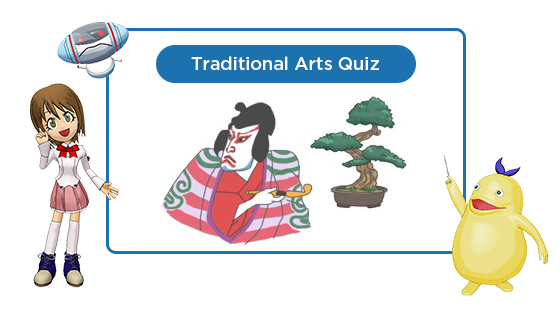Lesson 9Describing Present Situation - After-school Lessons -
Let's see
Various Lessons
View movie
Explanation through photos
Click (tap) to enlarge and show explanation.
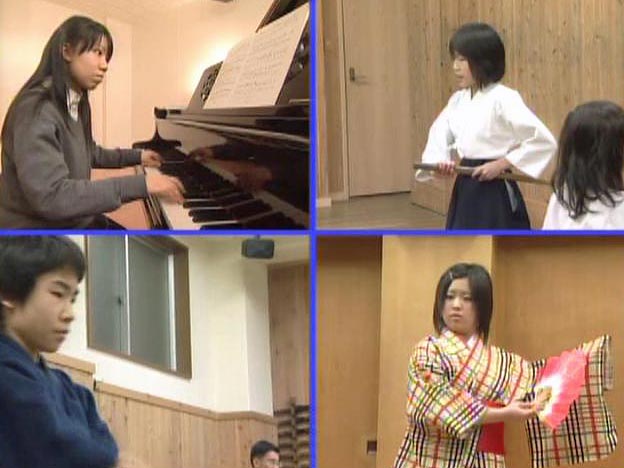 Cultural lessons
Cultural lessons
There are high school students who take cultural lessons after school or on weekends. Here, three high school students, one taking piano lessons, another taking kendo lessons, and the other taking Japanese dance lessons, are introduced.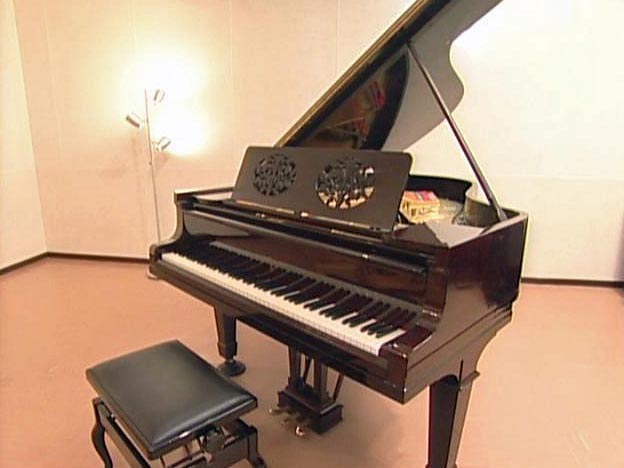 Piano
Piano
There is a piano. Taking piano lessons is popular in Japan. Many people take lessons from a young age, but not many continue with lessons into their high school years.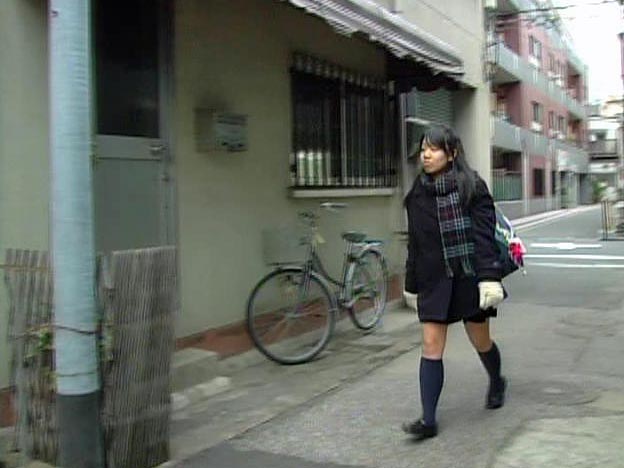 Going to a lesson
Going to a lesson
After school, she is going to a piano lesson. Some students take lessons at their teachers' homes while others go to music classes.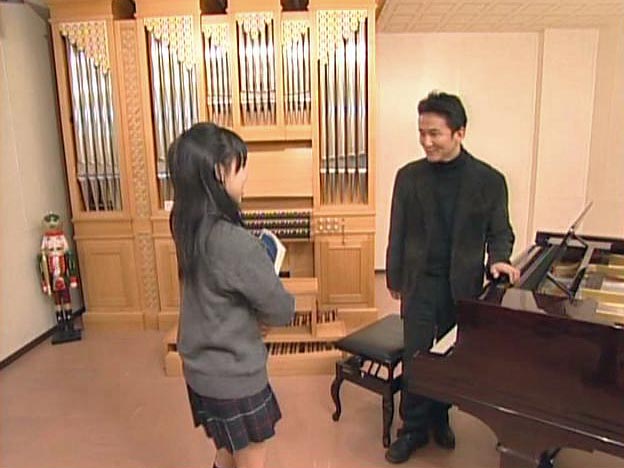 Start of a lesson
Start of a lesson
This is a private piano lesson. She takes lessons from the teacher one-to-one. At some classes, several students take lessons together. Before starting the lesson, she makes the greeting, Onegaishimasu [please train me]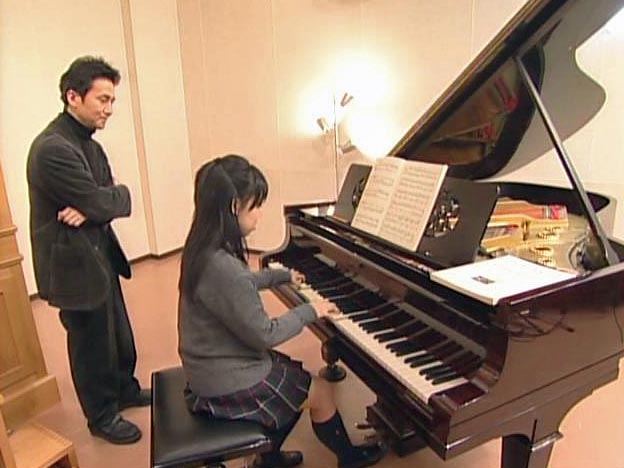 Playing the piano
Playing the piano
In front of the teacher, she plays the assigned piece that she has practiced at home.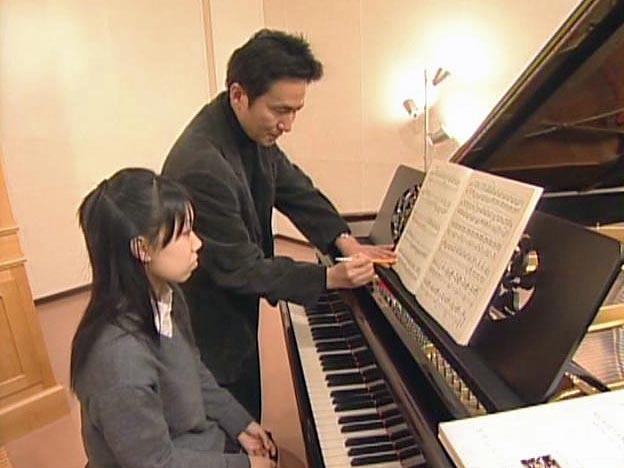 Guidance from the teacher
Guidance from the teacher
The teacher listens to her play and gives her guidance.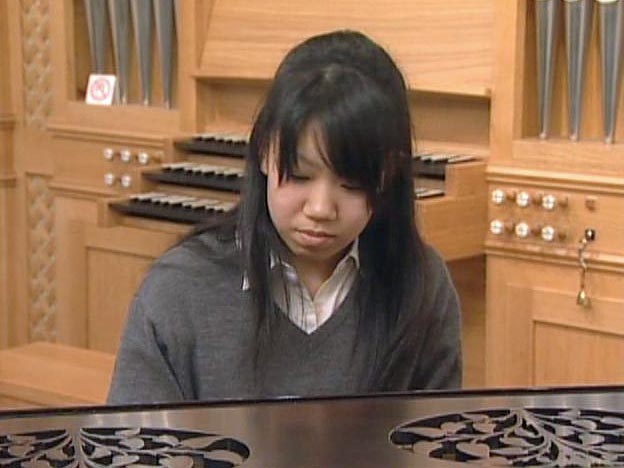 Exercise
Exercise
She practices the assigned piece repeatedly. She is very serious.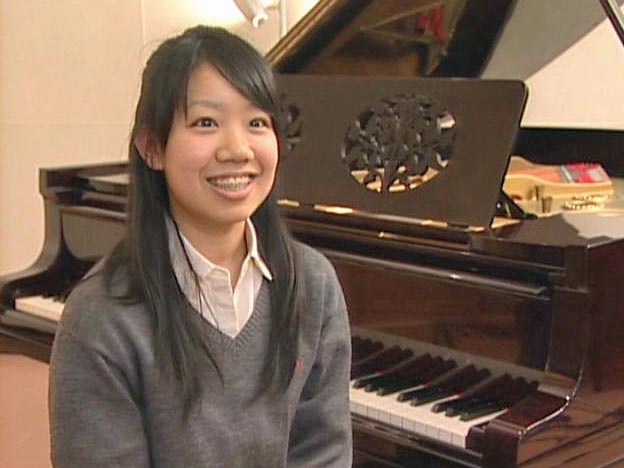 Student learning piano
Student learning piano
The student has been learning piano for 14 years. She has been playing piano for as long as she can remember.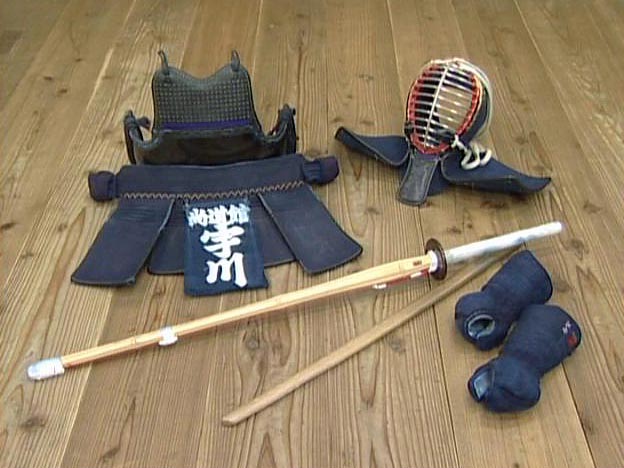 Kendo
Kendo
Kendo is another popular lesson. Kendo is a martial art born in Japan. This is kendo gear.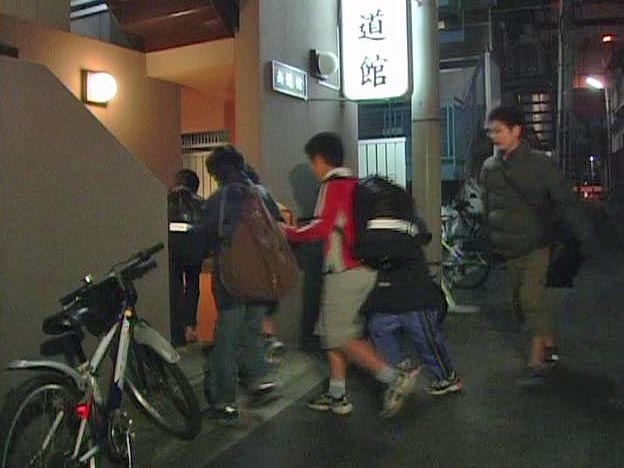 Night class
Night class
The weekday classes start from early evening or later at night. Kendo practice is also called keiko. The classroom for kendo is called a dojo. This dojo's name is Shodokan.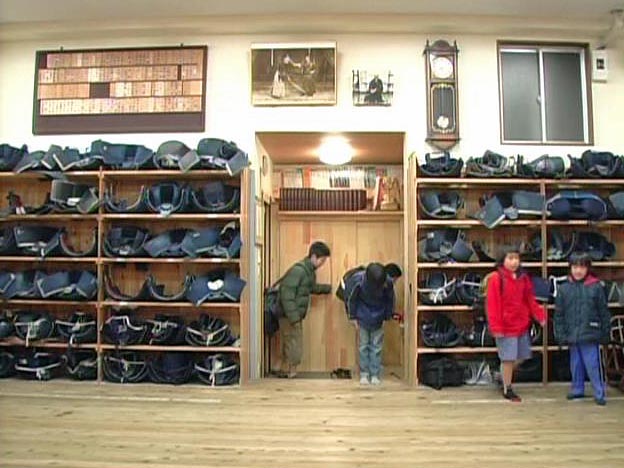 Bow
Bow
Japanese martial arts such as kendo place importance on proper manners. When you enter the dojo, you must bow.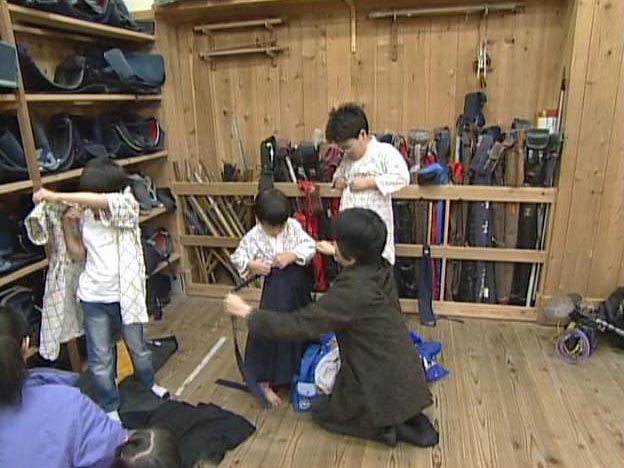 Changing clothes
Changing clothes
The learners vary in age. The clothes that they wear for kendo and other martial arts are called dogi. When they enter the dojo, they change into dogi. Sometimes adults help small children to change.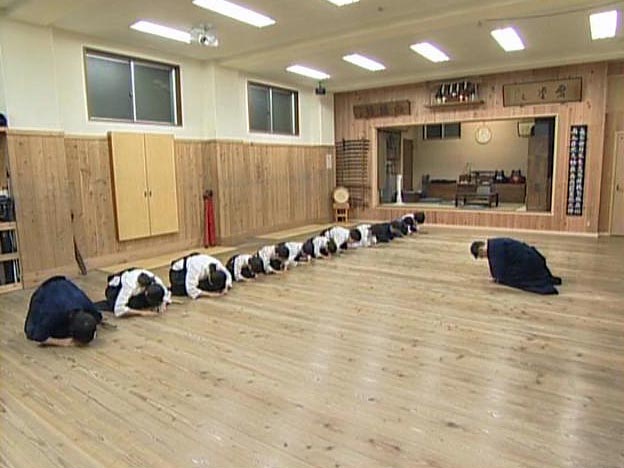 Start of a lesson
Start of a lesson
When they start keiko, they bow to the teacher. They sit straight and bow, placing their hands on the floor when they hear the command, Rei!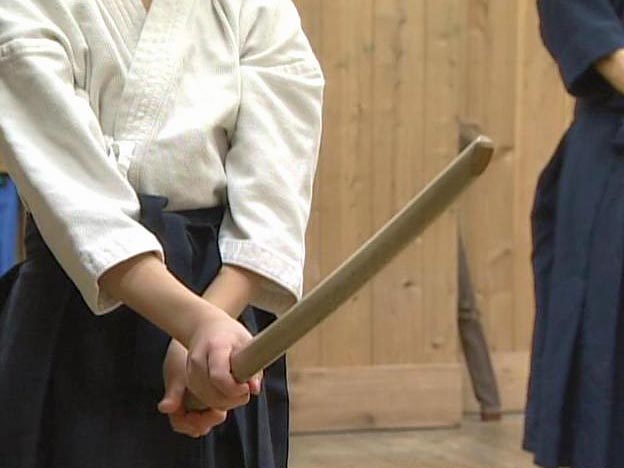 Bokuto
Bokuto
They practice sword-swinging. They use wooden swords, or bokuto.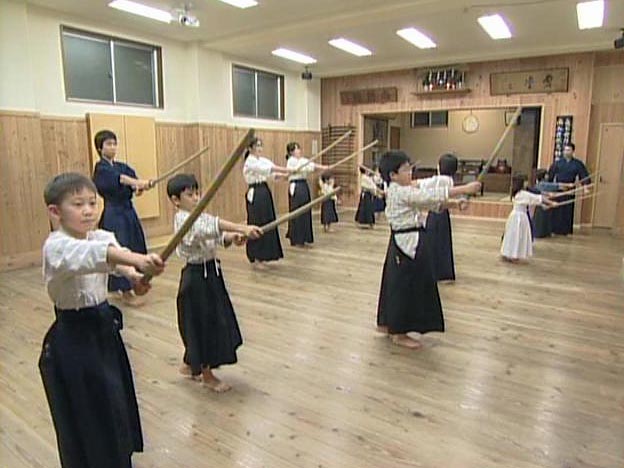 Practice swing
Practice swing
They practice with wooden swords all together. They are practicing a men strike, shouting Men!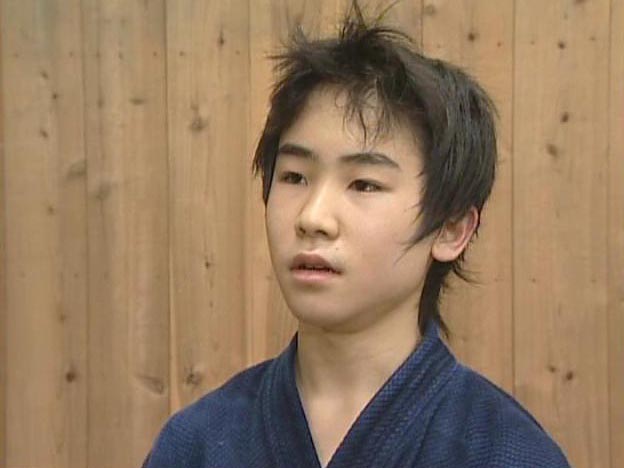 Student learning kendo
Student learning kendo
This high school student started learning kendo because his friends looked like they were enjoying kendo.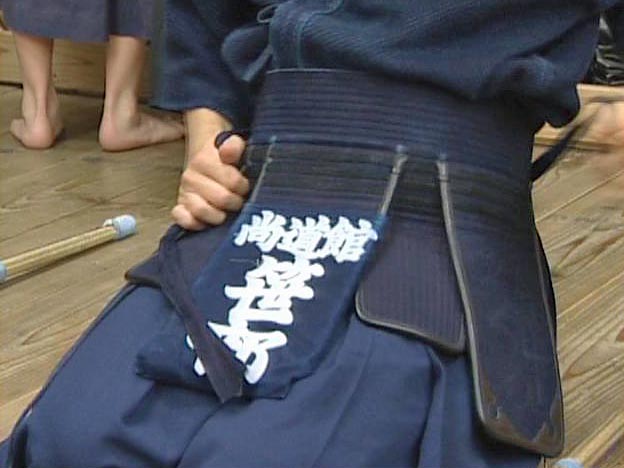 Tare
Tare
When they engage in a match, they put on a bogu to protect the body. This is called a tare, or a bogu to protect the lower body.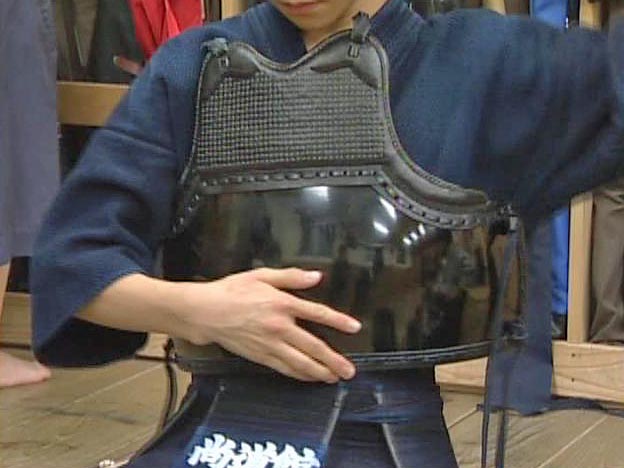 Do
Do
This is another bogu called do, and it is to protect around the stomach and chest.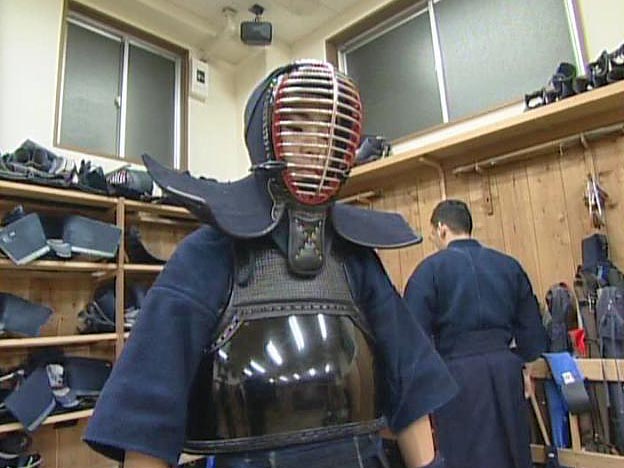 Men
Men
This is a bogu called men to protect the head, face, throat, and shoulders.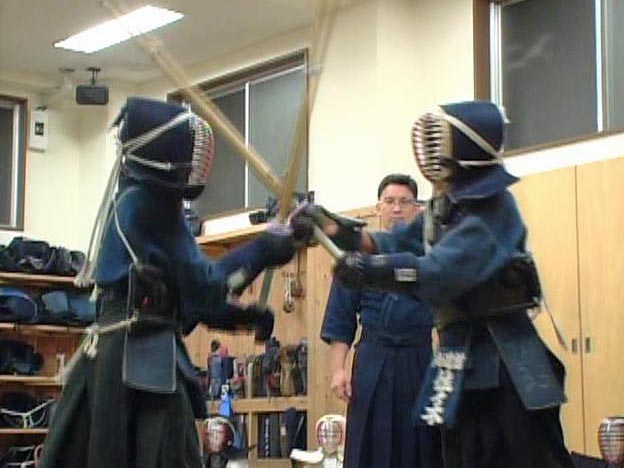 Practice match
Practice match
They practice for matches. At match practice, they use bamboo swords, or shinai. They call out in loud voices to put themselves in high spirits and engage in a match.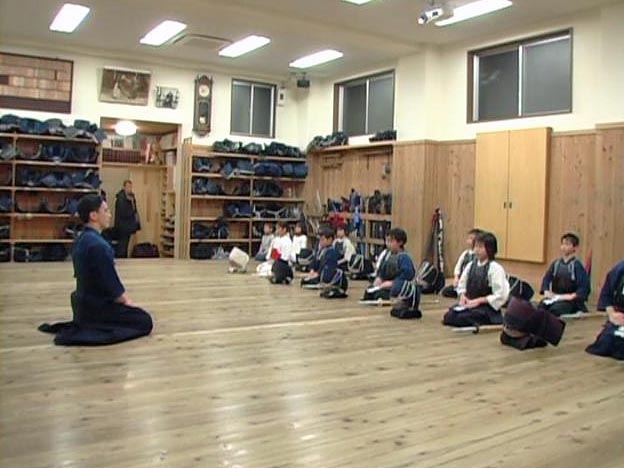 Concluding bow
Concluding bow
At the end of the practice, they again sit straight and make a greeting to the teacher. They place their shinai on their left, take off their men, and bow to the teacher. They are sweating profusely.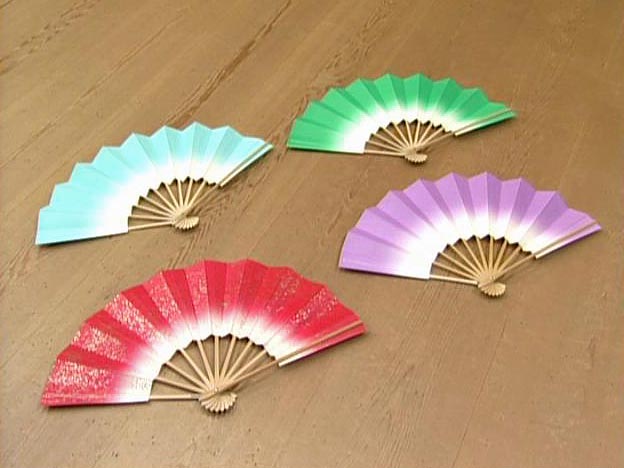 Folding fan
Folding fan
These are fans of Nihon buyo, or Japanese dance. It is a traditional Japanese dance form.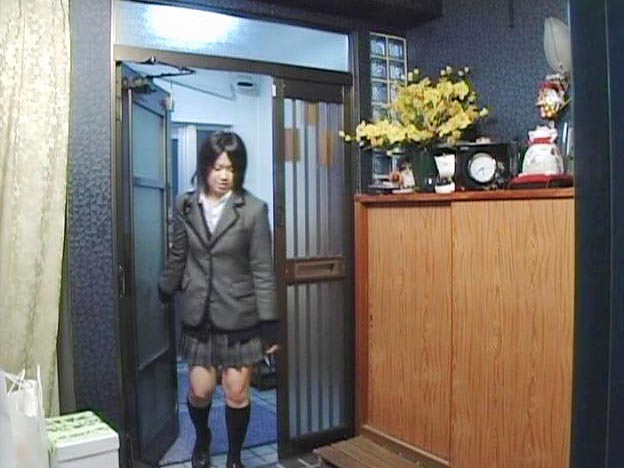 Going to a Japanese dance class
Going to a Japanese dance class
After school, she goes to a lesson. A Japanese dance lesson is also called keiko.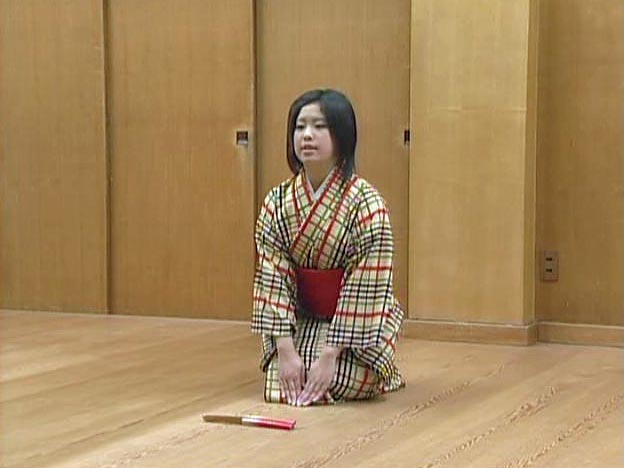 Start of a lesson
Start of a lesson
Japanese dance is practiced in kimono. At the beginning of the keiko, she puts a fan in front of her, sits straight, and bows to the teacher. She puts her fingers on the floor, making a triangle shape with her hands. She says, Sensei, onegai-itashimasu [Teacher, please train me].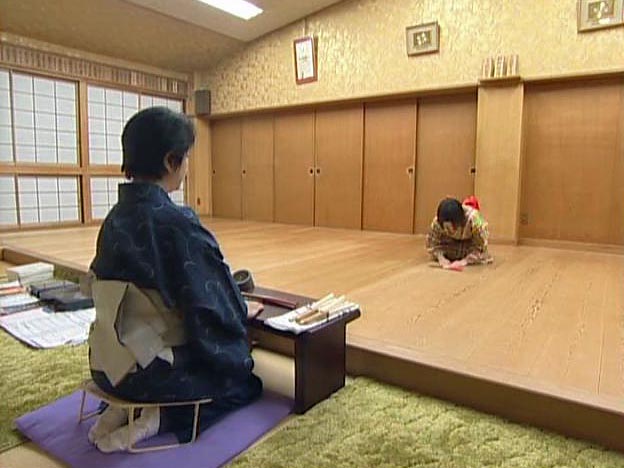 Teacher and student
Teacher and student
The student practices on the stage. The teacher also wears kimono, and sits straight while watching the practice.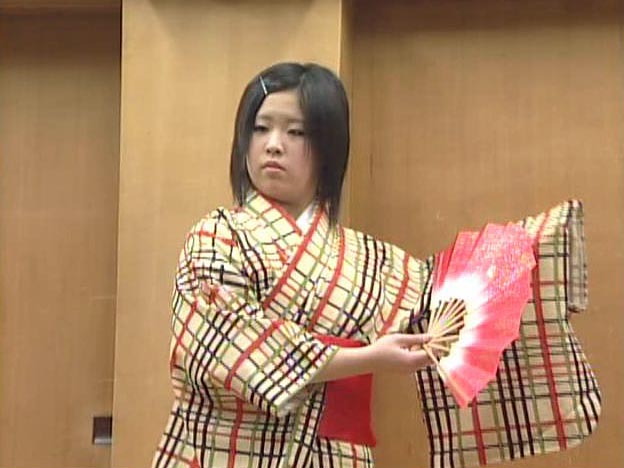 Dance
Dance
She dances with the music.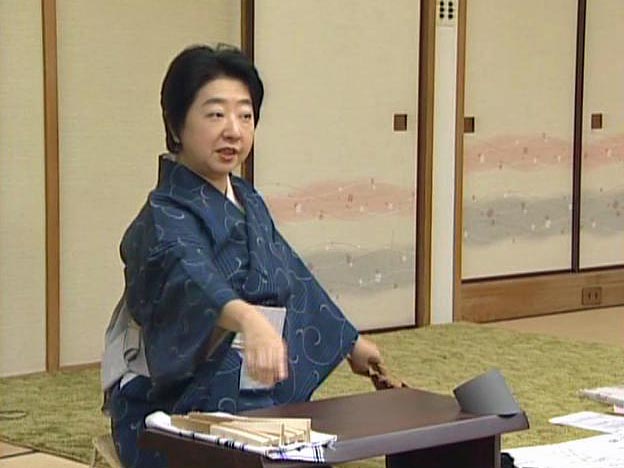 Teacher
Teacher
The teacher watches the student's movements and instructs her by showing how to move.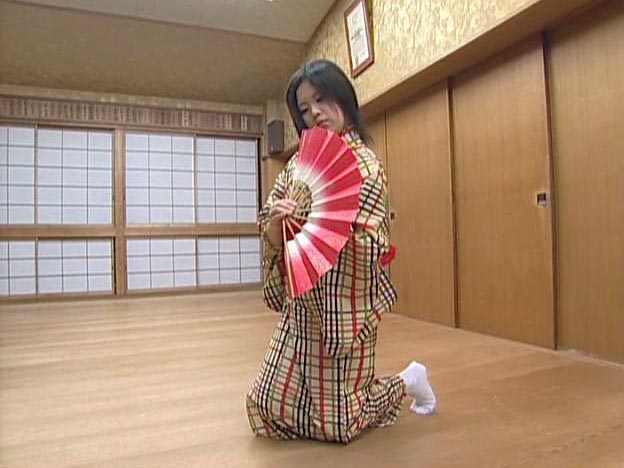 Striking a finishing pose
Striking a finishing pose
At the end of the dance, she strikes a pose. There are many things she has to pay careful attention to, such as neck and eye movements, how to lower her back, and the fan's position.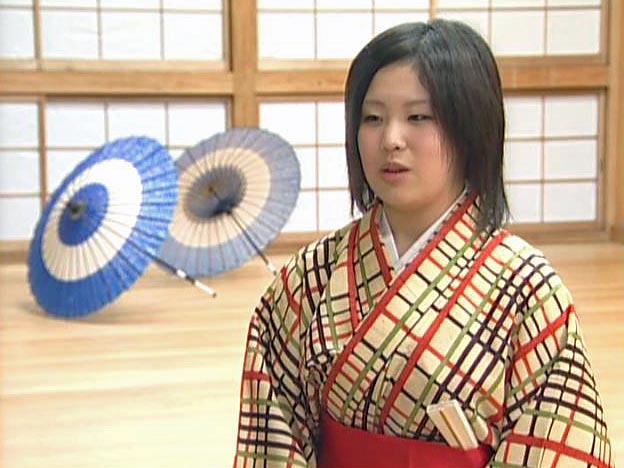 Student learning Japanese dance
Student learning Japanese dance
This student says that it is good for her to learn good manners through Japanese dance lessons.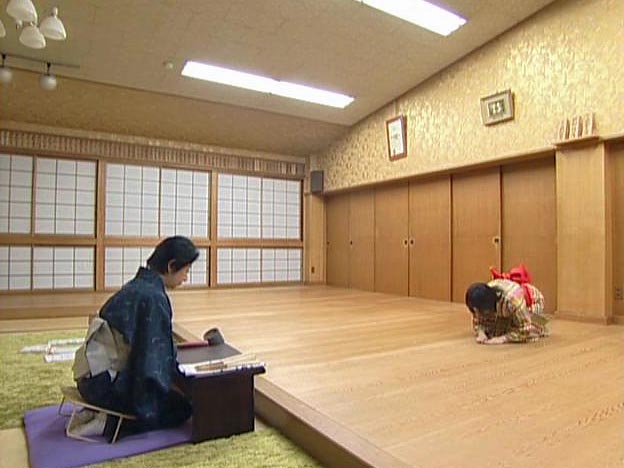 End of the lesson
End of the lesson
At the end of the lesson, she again sits straight and thanks the teacher by saying, Thank you very much, Teacher.

